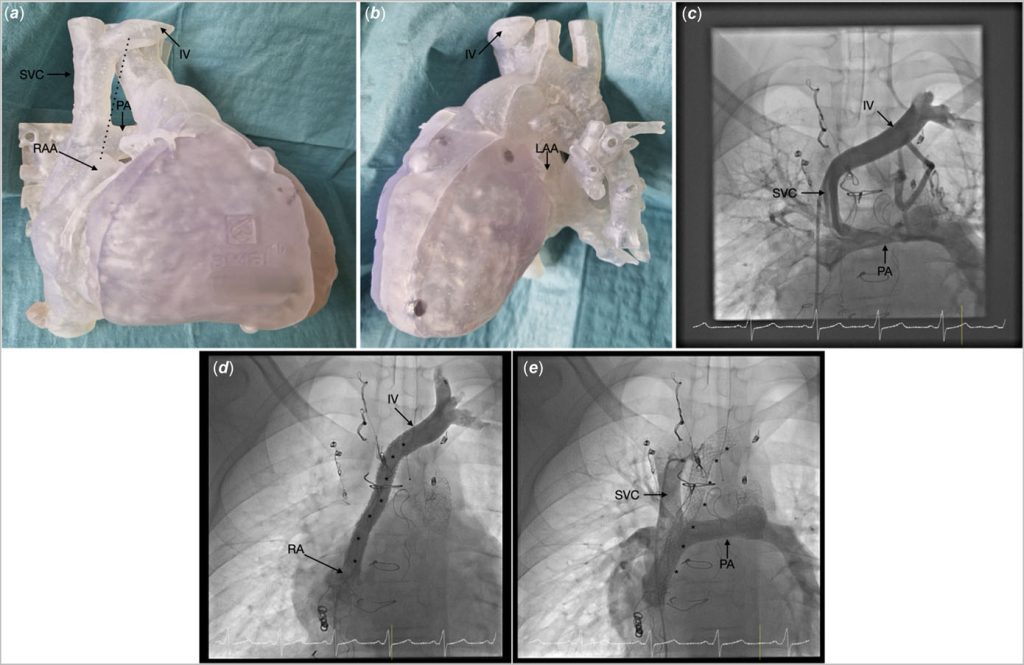A recent article in Cardiology in the Young, led by Dr. Colin J. McMahon from the Department of Paediatric Cardiology at Children’s Health Ireland at Crumlin (Dublin, Ireland), demonstrates how 3D-printed heart models from Axial3D supported life-changing surgical planning for two complex congenital heart cases.
Both patients suffered from complications associated with single ventricle physiology, including lymphatic abnormalities such as protein-losing enteropathy and chylothorax—conditions that are notoriously difficult to manage. In these patients, the clinical team pursued two different but novel strategies to redirect the innominate vein to the pulmonary venous atrium—known respectively as the Rome (transcatheter) and Hraska (surgical) procedures.

In Case One, a 15-year-old boy with hypoplastic left heart syndrome had developed severe protein-losing enteropathy despite multiple interventions. A 3D-printed model revealed that his left atrial appendage was too small to serve as the usual stent destination—an insight that was not appreciated on CT alone. As a result, the team safely rerouted the stent from the innominate vein to the right atrial appendage, successfully completing the Rome procedure. The patient recovered quickly and showed significant symptomatic improvement.
In Case Two, a 3-year-old boy with tricuspid and pulmonary atresia required Fontan completion. The 3D model helped confirm that the innominate vein could be directly anastomosed to the left atrial appendage without a conduit, a critical detail that shaped the surgical plan. Postoperative outcomes were excellent, with no complications, and the patient was discharged home in stable condition.
In both cases, Axial3D’s AI-powered image segmentation and 3D modeling provided critical insights that altered and optimized procedural plans, giving both the interventionalist and the surgeon increased confidence. The 3D models were also used during parental discussions, aiding in the informed consent process.
“Having the model saved time during the procedure and gave us reassurance that the approach was feasible,” said the clinical team.



